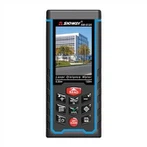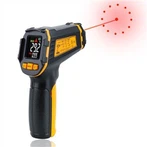Eddy Current Measurement Principle of Coating Thickness Gauges
High frequency AC signals generate electromagnetic fields in the probe coil, and when the probe approaches the conductor, eddy currents are formed within it. The closer the probe is to the conductive substrate, the greater the eddy current and the higher the reflection impedance. This feedback function characterizes the distance between the probe and the conductive substrate, that is, the thickness of the non-conductive coating on the conductive substrate. Due to their specialized ability to measure the thickness of coatings on non ferromagnetic metal substrates, these types of probes are commonly referred to as non-magnetic probes. The non-magnetic probe uses high-frequency materials as the coil core, such as platinum nickel alloy or other new materials. Compared with the principle of magnetic induction, the main difference is that the measuring head is different, the frequency of the signal is different, and the size and scale relationship of the signal are different. Like the magnetic induction thickness gauge, the eddy current thickness gauge also achieves a high level of resolution of 0.1um, allowable error of 1%, and a range of 10mm.
A thickness gauge based on the principle of eddy current can measure non-conductive coatings on all conductive materials, such as surfaces of spacecraft, vehicles, household appliances, aluminum alloy doors and windows, and other aluminum products, including paint, plastic coatings, and anodized films. The coating material has a certain conductivity, which can also be measured through calibration, but it is required that the ratio of conductivity between the two be at least 3-5 times different (such as chrome plating on copper). Although the steel substrate is also a conductive material, it is still more suitable to use magnetic principles for measurement in this type of task.






